
伤口世界
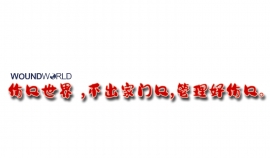
- 星期四, 11 4月 2024
Fib-4 – A diagnostic and prognostic marker for liver and cardiovascular events and mortality
The Fibrosis-4 index (Fib-4) can be used not only as a diagnostic tool for assessing advanced fibrosis in those with or at risk of developing non-alcoholic fatty liver disease, but also as a pragmatic biomarker to help assess the risk of liver and cardiovascular events and mortality over time, according to this large, prospective, longitudinal cohort study published in The Lancet Regional Health – Europe. The associations between Fib-4 and risk of liver events, cardiovascular events and all-cause mortality were independent of cardiovascular risk at study baseline, and an increase or decrease in Fib-4 score over 12 months was correlated with increased and decreased risk, respectively, across all three event types. Although hazard ratios for liver and cardiovascular events and mortality over time were initially higher in the indeterminate-risk group (Fib-4 score of 1.3–2.67) compared to the low-risk group (Fib-4 <1.3), they were no longer significant after adjustments for age, sex and baseline Framingham risk score. However, the hazard ratios for all three outcomes remained significantly elevated in those with a Fib-4 score of >2.67 (i.e. those with a high risk of advanced fibrosis) even after these adjustments. The authors conclude that sequential Fib-4 testing should be part of ongoing care in people with obesity and/or type 2 diabetes, as well as being used as a diagnostic marker for risk of advanced liver fibrosis to prompt referral for further testing.
Pam Brown GP in Swansea
Citation: Brown P (2024) Diabetes Distilled: Fib-4 – A diagnostic and prognostic marker for liver and cardiovascular events and mortality. Diabetes & Primary Care 26: [Early view publication]
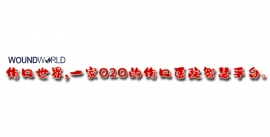
- 星期三, 10 4月 2024
Platelet-rich plasma (PRP) for treating chronic or complicated wounds in neonates and children: a case series
Abstract: Plasma derivatives have extensive applications in the field of regenerative medicine. Platelet-rich plasma (PRP) is a blood component acquired through centrifugation and can be administered through periwound injection or direct application to the wound bed area. PRP aids in shifting the healing process from chronic to acute, fostering regeneration in traumatic and surgical wounds. Here, we present seven cases of challenging wounds in paediatric patients that were treated using PRP at our institution.
Biagio Nicolosi,
Wound Clinical Nurse Specialist, Burn Center, Health Professions Department, AOU Meyer Children’s Hospital IRCCS, Florence, Italy
Virginia Carletti,
School of Paediatric and Neonatal Surgery, AOUMeyer Children’s Hospital IRCCS, Florence, Italy
Martina Certini,
School of Paediatric and Neonatal Surgery, AOU Meyer Children’s Hospital IRCCS, Florence, Italy
Giorgia Libro,
School of Paediatric and Neonatal Surgery, AOU Meyer Children’s Hospital IRCCS, Florence, Italy
Emiliano Ambretti,
School of Paediatrics, University of Siena, Siena, Italy
Paola Pavan,
Department of Immunohematology and Transfusion Medicine, AOU Meyer Children’s Hospital IRCCS, Florence, Italy
Flavio Facchini,
Department of Paediatric and Neonatal Surgery, AOU Meyer Children’s Hospital IRCCS, Florence, Italy
Antonino Morabito, Department of Paediatric and Neonatal Surgery, AOU Meyer Children’s Hospital IRCCS, Florence, Italy; Department of Neurosciences, Psychology, Drug Research and Child Health (NEUROFARBA), University of Florence; Florence, Italy; School of Health and Society, University of Salford, Salford, UK
Valentina Granai
Pediatric intensive care unit Nurse, Meyer Children’s hospital IRCCS, Florence, Italy
Key words
- Paediatrics
- Plasma derivatives
- Regenerative medicine
- Wound dehiscence
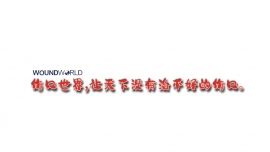
- 星期二, 09 4月 2024
Adherence and oxygen therapy: a case series
Abstract: Chronic, hard-to-heal wounds affect millions of people worldwide, representing a burden for healthcare systems, society, and patients. The following case series describes the use of an advanced therapy (oxygen wound therapy). The results of two patients with chronic wounds suggests this that oxygen therapy can improve outcomes, while allowing self-care by the patient and leading to increased adherence to the treatment plan.
Aisling Roberts, Surgical ACP, DrEd (year 3), Mscadvanced practice in skin integrity, Bsc, Pgc in chronic oedema. Great western hospital
Key words
Adherence Chronic wounds Oxygen therapy Self-care
Declaration of interest
The authors have no conflicting interests. This was a product in current use in the Leg Ulcer Clinic. Both patients consented to the use of their treatment and images for this publication.
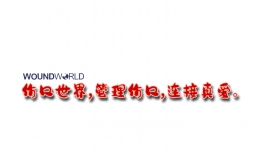
- 星期一, 08 4月 2024
HIV-negative Kaposi sarcoma manifesting as foot lesion in a patient with diabetes mellitus: a case study
Abstract: Kaposi’s sarcoma caused by Kaposi’s sarcoma-associated virus, is a rare malignancy in the general population with unique features. However, clinical presentation on the feet can mimic a diabetic foot ulcer. Here we describe the case of a 63-year-old male with type 2 diabetes, who presented with a lesion on the left 4th toe. Left foot radiograph in lateral and dorsoplantar views were normal. Full skin examination identified lesions with a similar morphology on the forearms. A HIV antigen/antibody test was negative, histology showed CD31 positive spindle cells and the presence of Kaposi’s sarcoma-associated virus confirming the diagnosis of Kaposi’s sarcoma. Kaposi’s sarcoma-associated virus’ lytic cycle can be triggered by the immunosuppressive state caused by tissue’s chronic exposure to a hyperglycaemic environment. A thorough general examination to identify lesions elsewhere in the body can help to identify the systemic nature of the disease. Pedal lesions in patients with diabetes with an atypical presentation that are refractory to standard treatment should prompt early histological examination. Early diagnosis and intervention can improve the chances of remission.
Farishta Khan,
Norfolk and Norwich University Hospitals NHS Foundation Trust
Dijon Millette,
Mersey and West Lancashire Teaching Hospitals NHS Trust
Roshan Siddique,
St George’s University of London
Haroon Siddique,
Russell Hall Hospital, Dudley Group NHS Trust
Key words
- AIDS
- Diabetes
- Diabetic foot ulcer
- Kaposi sarcoma
- Kaposi’s sarcoma-associated virus
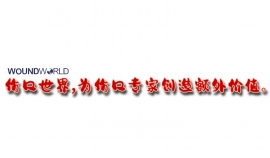
- 星期日, 07 4月 2024
Powdered porcine urinary bladder matrix for treating chronic diabetic wounds: clinical case studies
This article is based on a presentation by Professor Steven Jeffery at the annual Wounds UK conference in Harrogate, on 7 November 2023. Professor Jeffery presented clinical studies on how a bioengineered wound therapy with a porcine urinary bladder matrix (UBM) may facilitate healing of chronic wounds.
Steven LA Jeffery
Medical Director Pioneer Wound Telehealth and Professor of Wound Study, Birmingham City University
John McRobert
Clinical Research Director, Pioneer Wound Telehealth
Key words
- Chronic diabetic wounds
- Urinary bladder matrix
- Macrophages
- Wound healing
- Meeting report
- Wound care services
This meeting report has been funded by an educational grant from Integra

- 星期三, 03 4月 2024
Managing wounds at risk of infection in difficult-to-dress areas
Steven Percival
BSc, PGCE, MSc, MSc, PhD, CEO, 5D Health Protection Group Ltd, Professor (hon), School of Medicine, University of Manchester, UK
Leanne Atkin
PhD MHSc, RGN, Vascular Nurse Consultant/Lecturer Practitioner, Mid Yorks NHS Trust, University of Huddersfield, UK
Key words
- Infection
- Flaminal®
- Antimicrobial resistance
- Meeting report
Declarations
The symposium and report were supported by Flen Health.
